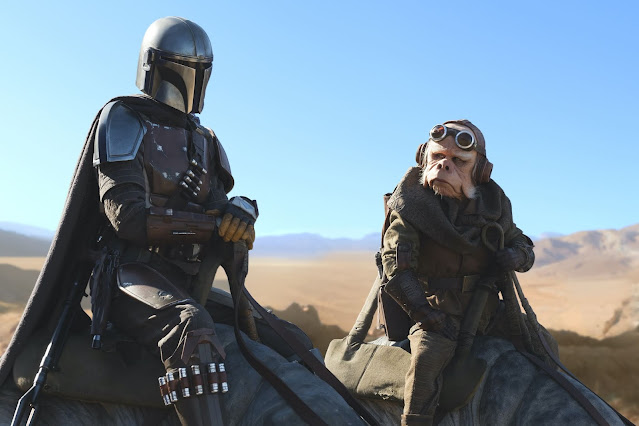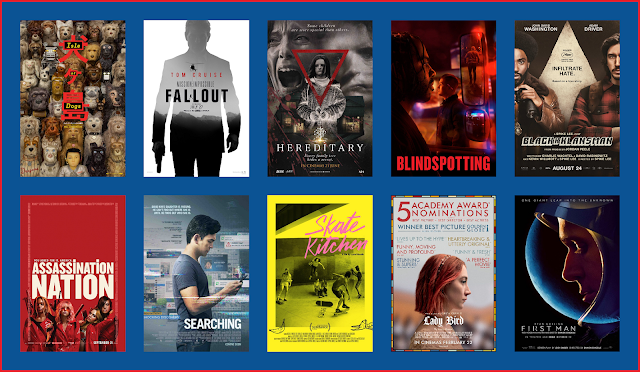The Mandalorian Chapter 1 Spoiler-Free Review
(A version of this article originally appeared on kernelnow.com / mynewslike.com)
Though the idea of a Star Wars sequel trilogy seemed far-fetched before Disney’s 2012 takeover of Lucasfilm, the release of The Mandalorian to Disney+ finally brings to a fruition an idea that did seem altogether more likely in the years before Disney’s rapid expansion: a live-action Star Wars TV show.
It was an idea long developed by ‘The Maker’ George Lucas himself, mostly in the form of the infamous Star Wars Underworld series that proved too expensive to bring to life. However, with the arrival of the House of Mouse and their seemingly-unlimited backing, “the most expensive show ever made” is finally here.
 |
| The man with no name, perhaps – but there is no absence of budget here (source: starwars.com) |
Following the exploits of an as-yet-unnamed bounty hunter – the titular ‘Mandalorian’ – this premiere episode explores his quest to bring in a particularly difficult bounty. In an opening scene that takes the televisual concept of a “cold open” quite literally, Pedro Pascal establishes his character as a man of very few words as he takes in his latest charter in a cantina. It’s a scene that very much invokes the Western iconography that has long been teased, even if any tension in the standoffs is negated by the inevitability of the lead’s success. The episode is very quickly established as not (exclusively) family-friendly with the inventive use of a classic Star Wars sliding door, which along with a ridiculous trail of bodies in the final set-piece surely qualifies this as the “bloodiest” entry into the saga so far.
The Western motif is further established as galactic versions of ranches and saloons populate nearly every scene. In doing so, there is a similar visual to that seen in Joss Whedon’s popular series Firefly – and the design of The Mandalorian’s ship suggests that this may be no mere coincidental homage. Longtime TV composer Ludwig Göransson also utilises a trademark offbeat score indebted to films of cowboys past, whilst somehow ensuring that it still sounds unmistakably “Star Warsian”.
Aside from the Wild West, showrunner Jon Favreau has promised a visual style akin to the Original Trilogy, particularly that of A New Hope. Of course, the use of a cantina goes a long way to help this; however, the cinematography proves the surest way to recreate an existing style. Complimented by the same “lived-in” aesthetic as Lucas’s Tatooine and Yavin IV, director and longtime Lucasfilm collaborator Dave Filoni (The Clone Wars, Rebels) isn’t afraid to edit the show in the same way as those original episodes. Screen wipes and drop transitions make a return, if a little more artistically so than before, maintaining that this show is already closer to the IV-VI that it follows than the VII-IX which it precedes.
 |
| The Mandalorian (Pedro Pascal) already promises much intrigue (source: starwars.com) |
What’s more, The Mandalorian himself seems more than just a cold-blooded, emotionless killer. He speaks briefly (although always ready with a one-liner, like an armored Clint Eastwood or Charles Bronson), and the words he shares with others hint at a wider central goal than just hunting bounties. The addition of flashbacks (one of many traits the show shares with Rogue One) directly stab at his underlying tragic past, and two scenes in particular speak to a humanity behind the helmet.
The first takes place in conversation with – of all things – the Star Wars equivalent of a blacksmith, where the hunter’s ties and desires toward his ancient Mandalorian heritage are hinted at. Is he in exile, or just unproven? With the so-far lack of an overseeing antagonist, these may be the questions that come to define both hero and series.
The other peek beneath the Beskar comes in a scene plucked straight from Godless or Red Dead Redemption, with
a lesson in extra-terrestrial bronco-busting from Ugnaught moisture
farmer Kuiil (guest star Nick Nolte). As he struggles and eventually
loses his patience, The Mandalorian shows a dent in his ice-cold
demeanor and that he is not merely a perfect warrior with an equippable
skillset.
 |
| Kruiil (Nick Nolte) serves up a valuable lesson in patience – and humility (source: starwars.com) |
This all leads to the episode’s conclusion, where our protagonist enlists the help of droid IG-11 (a K-2SO-esque Taika Waititi) to bring in the bounty for Nazi-inspired Imperials ‘The Client’ (Werner Herzog) and Dr. Pershing (Omad Abtahi). Like so much of modern Star Wars, the final scene will either cause your jaw to drop or eyes to roll, depending on your thoughts on fan service. Regardless of how you feel about it, it’s a move that quickly shows just how serious this show is about not just adding to but fleshing out the Star Wars mythos.
We’re only 38 minutes into this series, but already there’s much to discuss – and debate. But, with its high production value and well-crafted pace, the most undeniable aspect to Chapter One of The Mandalorian is this: prestige small-screen Star Wars has finally arrived.



Comments
Post a Comment